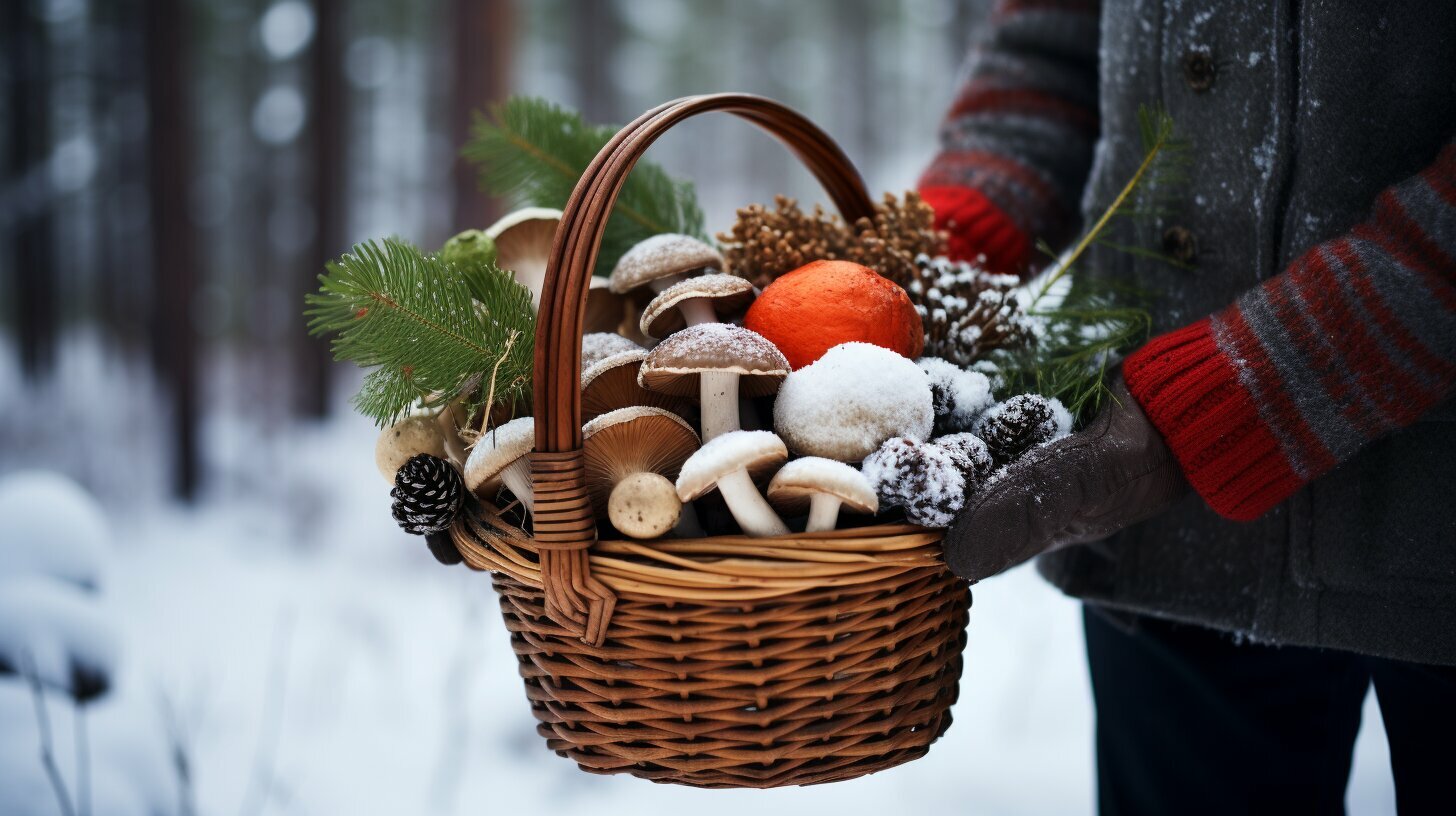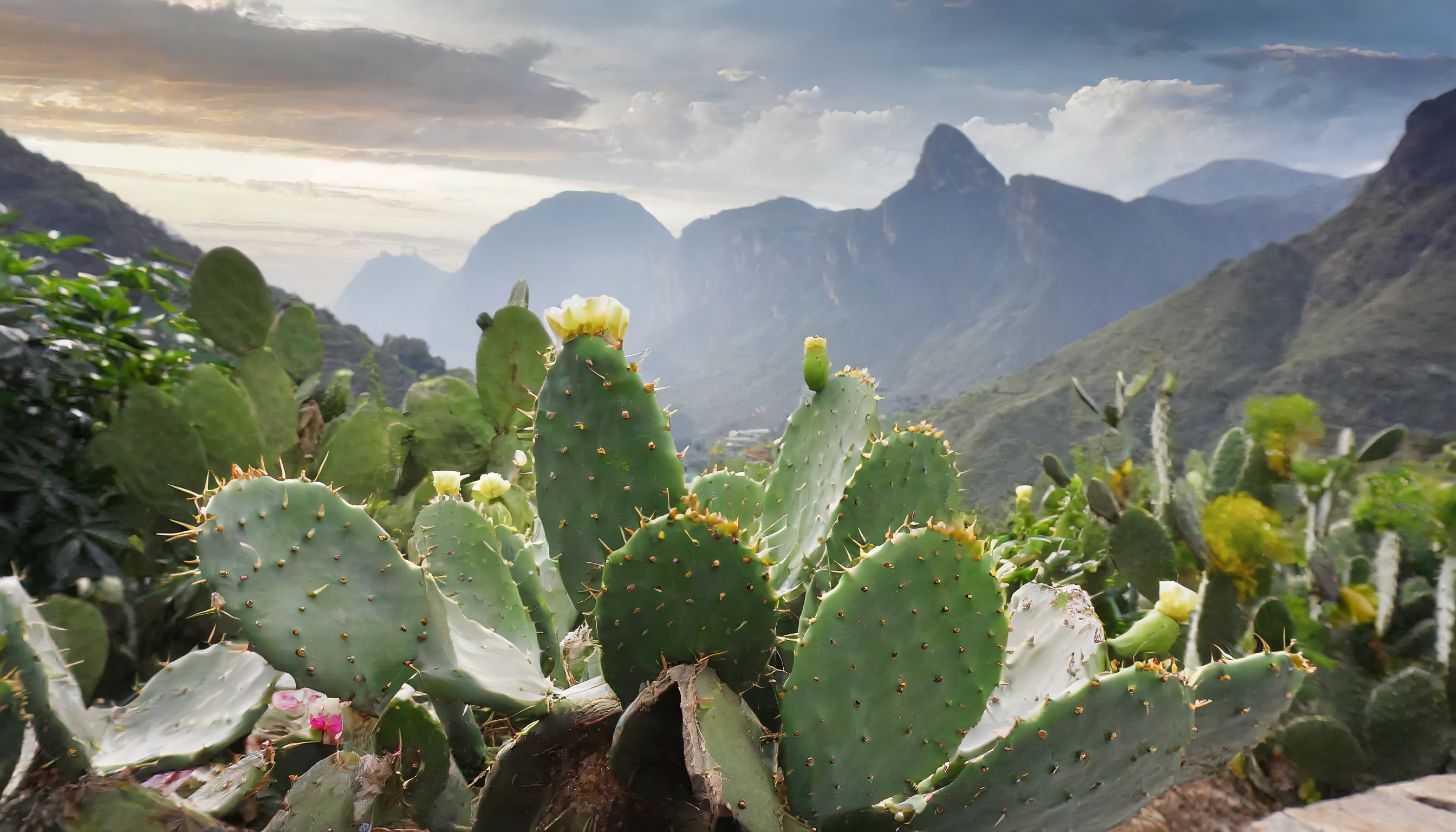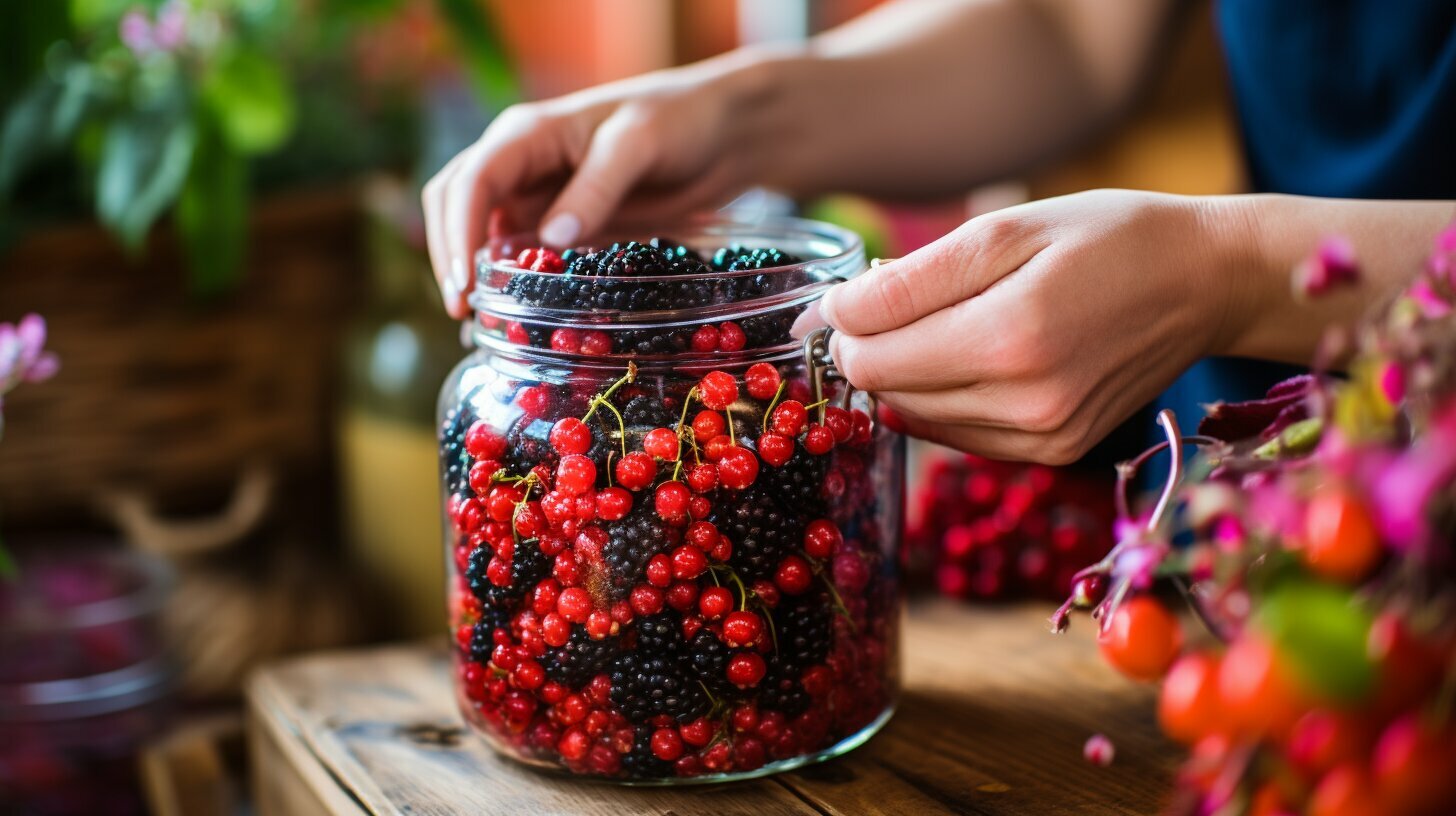Winter can be a brutal season, with icy winds and snowstorms driving people indoors. However, did you know that even in the harshest of climates, nature still provides us with an abundance of edible plants and foraging opportunities? Snow foraging is an age-old tradition, dating back centuries, and it’s an essential skill for anyone who wants to live off the land or simply connect with nature’s winter bounty.
In this guide, we will explore the world of snow foraging, providing you with the knowledge and skills necessary to forage safely and sustainably in wintery conditions. From identifying edible plants in the snow to mastering winter foraging techniques, we’ll cover everything you need to know to embark on your own snow foraging adventures.
Key Takeaways
- Snow foraging is a skill that can provide food and a connection to nature even in the harshest of winter climates.
- Winter landscapes can offer an abundance of edible plants, and learning to recognize and forage them can be rewarding and fulfilling.
- This guide will provide practical tips and techniques to enhance your winter foraging skills while emphasizing the importance of safety and sustainability.
Understanding Snow Foraging Techniques
Winter landscapes may seem barren, but beneath the snow lies a wealth of edible plants waiting to be discovered. By mastering specific techniques, you can successfully forage in the snow and enjoy the bounty of winter’s harvest.
First, it’s crucial to understand how to identify edible plants in the snow. Look for hardy vegetables, such as root vegetables like carrots, parsnips, and turnips, as well as leafy greens like spinach, kale, and collards. Additionally, berries like wintergreen and cranberries thrive in the cold and can be a tasty treat during your foraging expedition.
Disclosure: When you buy through links on our site, we may earn an affiliate commission.
When foraging in the snow, it’s essential to know how to distinguish edible plants from harmful ones. Ensure you’re familiar with all native plants in your region and their properties. An excellent resource to use is a field guide to edible plants in the area.
Understanding the nutritional value of the plants you are foraging is also important. Nutrient-rich food like acorns and pine nuts can provide valuable sustenance during the cold months.
Locating edible plants in winter landscapes may seem challenging, but it’s possible to find them even in snowy terrain. Look for south-facing slopes, open fields, and the banks of streams, as these areas tend to have more sunlight and are often home to a variety of plants.
When foraging, always practice sustainable foraging techniques and gather only what you need. Taking care to avoid damaging plant roots or habitats is crucial, as is respecting wildlife territories. For a more in-depth guide on sustainable foraging techniques, check out The Sustainable Forager: A Guide to Responsible Foraging in Winter.
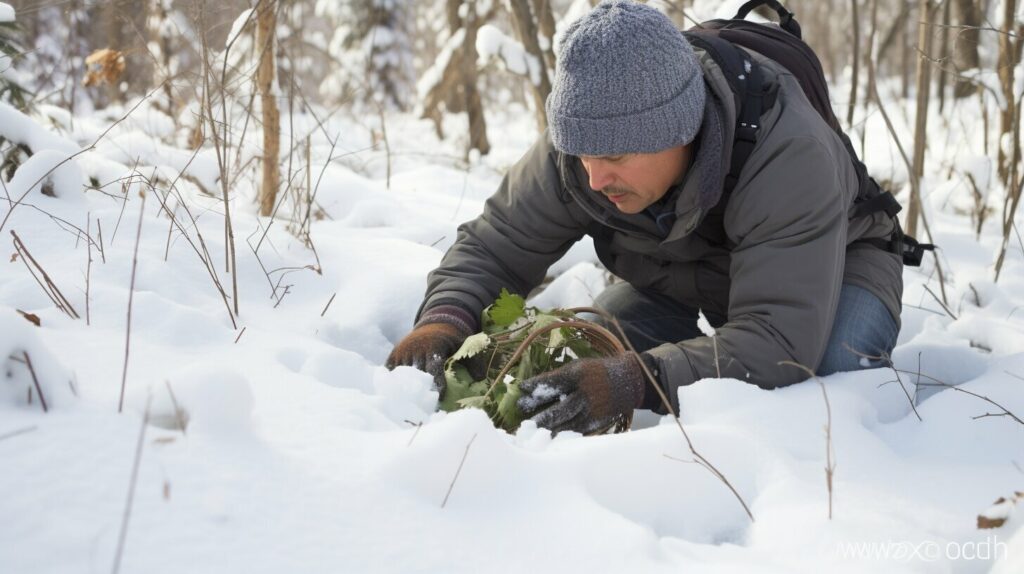
Tools for Successful Snow Foraging
Having the proper tools and equipment is crucial for successful snow foraging. A sturdy pair of snow boots with good traction is a must to avoid slipping and falling in snowy terrain. Dress in layers and ensure you have proper cold-weather clothing, including gloves and a hat, to protect your body from the harsh winter conditions.
Carry a small shovel to help uncover buried plants, and bring a container for storing any edible plants you gather. Consider investing in a pair of pruning shears to cut tough stems or branches.
Another essential tool for successful snow foraging is a map of the area. Knowing your surroundings and having a detailed map can help you navigate the terrain and find the best spots for gathering edible plants.
By understanding specific snow foraging techniques and having the proper tools, you can enjoy the rewards of winter harvests. Take the time to learn about the edible plants in your area, and enjoy the beauty of winter landscapes as you embark on your snow foraging journey.
Safety First: Snow Foraging Precautions
Winter foraging can be a rewarding and exciting experience, but it’s essential to prioritize safety while exploring snowy landscapes. The cold temperatures and snowy terrain present unique challenges that require additional precautions.
One of the most critical safety measures is ensuring that you have the proper gear and clothing to protect yourself from the cold. Dress in layers to stay warm and wear waterproof boots with good traction to prevent slips and falls in icy conditions. It’s also crucial to carry emergency supplies such as a first-aid kit, a flashlight, and extra food and water in case of unexpected weather changes or an accident.
Moreover, it’s essential to be aware of the potential risks associated with snow foraging, such as hypothermia, frostbite, and avalanches. Before heading out, consider checking the weather forecast, snow conditions, and avalanche danger levels. Knowing how to recognize and avoid avalanche-prone areas can save your life.
Another crucial aspect to keep in mind is respecting wildlife habitats and ecosystems. Avoid damaging plants and natural habitats while foraging and be careful not to disturb animal homes. Remember to leave no trace and practice sustainable foraging techniques to avoid damaging the ecosystem.
Finally, it’s essential to educate yourself on winter foraging safety resources. Familiarize yourself with the signs and symptoms of hypothermia and frostbite, and learn how to prevent and treat them. Keep a copy of local emergency contacts, and let someone know where you’re going and when you plan to return.
By prioritizing safety and taking the necessary precautions, you can enjoy a safe and successful winter foraging experience.

Embracing the Outdoors: The Joy of Winter Foraging
Winter foraging may seem like a daunting task at first, but with the right mindset and preparation, it can be an incredibly rewarding experience. Foraging in the snow presents a unique opportunity to connect with nature and appreciate the beauty of winter landscapes.
While the idea of trudging through the snow may not sound appealing, the sense of adventure that comes with winter foraging is unmatched. Imagine venturing out into the white wilderness, bundled up in warm clothes, and seeking out the hidden treasures that lie beneath the snow. It’s an experience that will leave you feeling invigorated and alive.
Moreover, winter foraging offers valuable therapeutic benefits. Spending time outdoors in nature has been shown to reduce stress and anxiety levels, boost mood, and improve overall mental health.
Of course, let’s not forget the most significant benefit of winter foraging – the food! The winter landscape may seem barren, but it’s full of wild, edible plants that can be transformed into delicious meals. From pine needles to cattails to rose hips, the possibilities are endless.
“Winter foraging presents a unique opportunity to connect with nature and appreciate the beauty of winter landscapes.”
So, grab your snowshoes and head out into the great outdoors. Start small, and don’t be discouraged if your first foraging expedition yields little. Remember, winter foraging is a skill that takes time and patience to master. As you hone your skills and become more familiar with the winter landscape, the rewards will be well worth the effort.
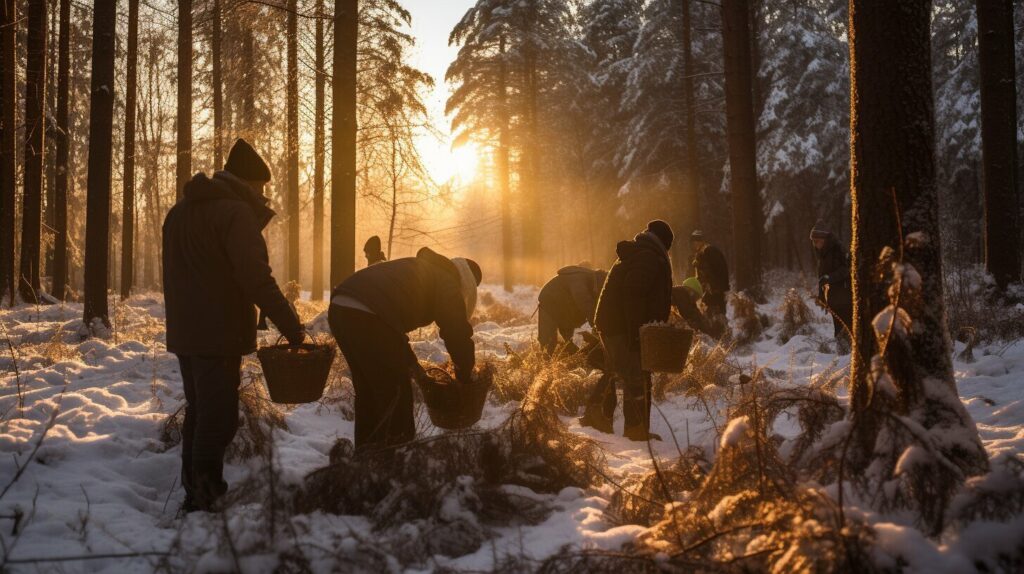
Mastering Winter Foraging Skills
Winter foraging requires a unique set of skills and techniques to ensure a successful and safe experience. Here are some practical tips to help you become a winter foraging expert:
- Track animal movements: Animals tend to leave tracks in the snow, providing vital clues to their location and movements. Track them to find their food sources.
- Prepare your tools: Make sure your foraging equipment is appropriate for snowy conditions. Carry a small shovel or trowel to help dig through the snow if needed.
- Preserve your foraged food: Since winter foraging can be scarce, it’s important to preserve any food you find. You can do this by drying, canning, or freezing.
- Practice responsible foraging: Avoid foraging in protected areas and be respectful of wildlife habitats. Make sure to only take what you need and leave enough for wildlife to survive.
By mastering these skills, you’ll be well on your way to becoming a winter foraging expert!
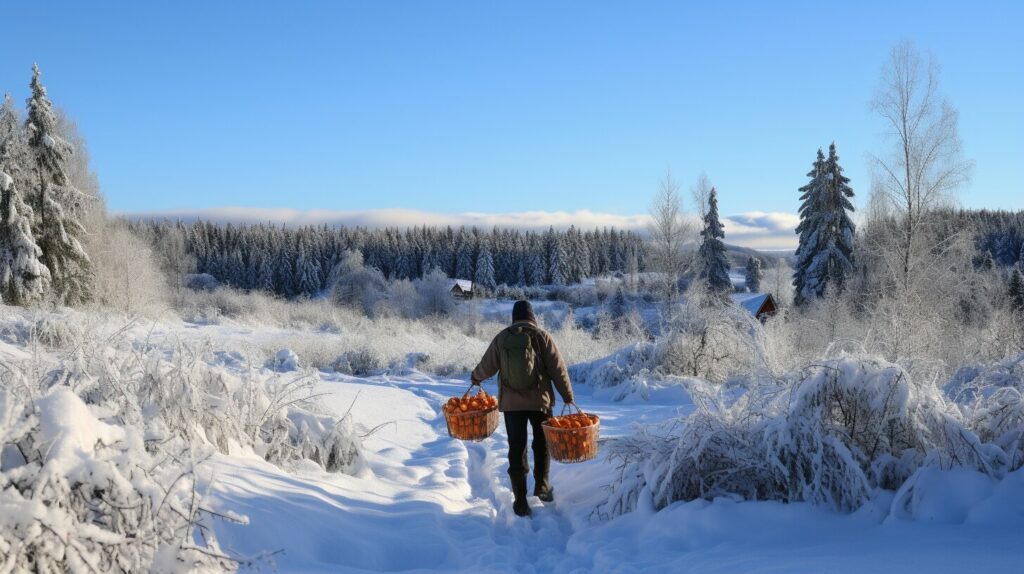
Conclusion
You now have the essential snow foraging guide to discover winter’s bounty! From understanding snow foraging techniques to mastering your winter foraging skills, you’re now equipped with the knowledge to safely and sustainably forage for edible plants in the snow.
Don’t forget to prioritize safety first by taking the necessary precautions and preparing yourself with proper gear and clothing. And while foraging in the winter might seem daunting at first, embracing the outdoors and exploring the beauty of winter landscapes can be a truly rewarding experience.
Remember to always respect wildlife habitats and practice sustainable foraging techniques to ensure that these resources remain available for future generations. So, what are you waiting for? Grab your gear, head out into the snow, and discover the magic of nature’s winter bounty!
FAQ
Q: What is snow foraging?
A: Snow foraging is the practice of gathering edible plants in snowy conditions. It involves identifying and harvesting wild food sources that can thrive even in winter landscapes.
Q: Why is winter foraging important?
A: Winter foraging is important because it allows us to connect with nature and utilize the abundance of edible plants that can be found even in the colder months. It provides an opportunity to explore and appreciate the beauty of winter landscapes.
Q: How can I identify edible plants in the snow?
A: Identifying edible plants in the snow can be challenging, but there are certain characteristics to look for. Pay attention to plant shape, color, and location. It’s always best to consult a reliable field guide or seek guidance from an experienced forager.
Q: What safety precautions should I take while snow foraging?
A: Safety should be a priority when snow foraging. Make sure to dress appropriately for the weather, carry essential gear, and let someone know about your plans. Familiarize yourself with potential risks, such as avalanches, and be prepared with emergency supplies.
Q: Can I forage in wildlife habitats?
A: While foraging in wildlife habitats can be tempting, it’s important to respect and protect these areas. Avoid disturbing animal habitats and follow sustainable foraging practices to minimize any negative impact on wildlife.
Q: How should I preserve and store foraged winter food?
A: There are several methods to preserve and store foraged winter food. Drying, freezing, or canning are popular options. It’s essential to properly clean and prepare the food before preserving it and store it in appropriate containers to maintain its freshness.

